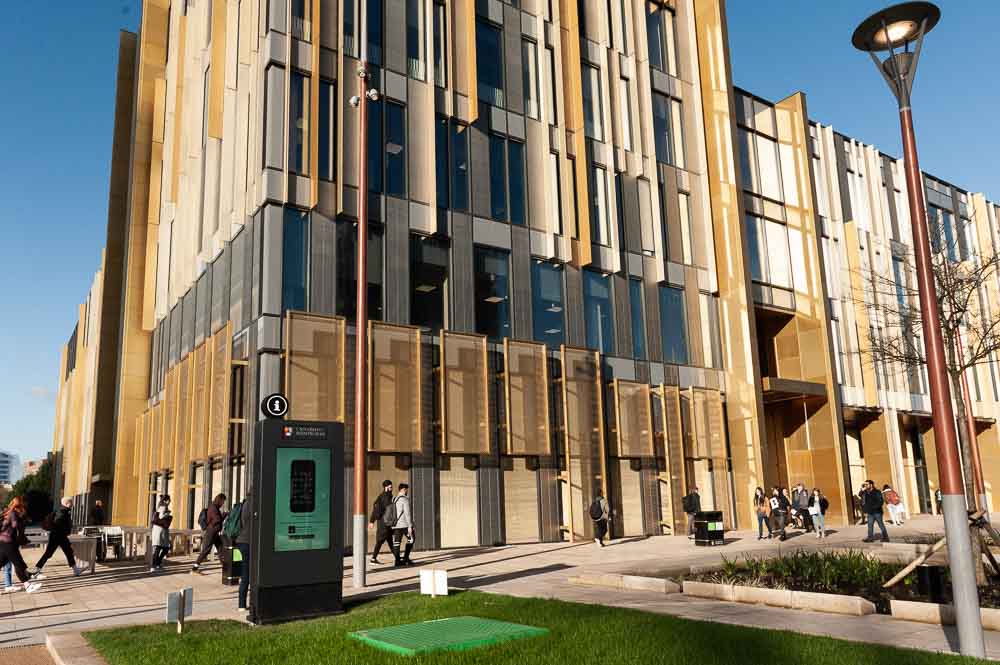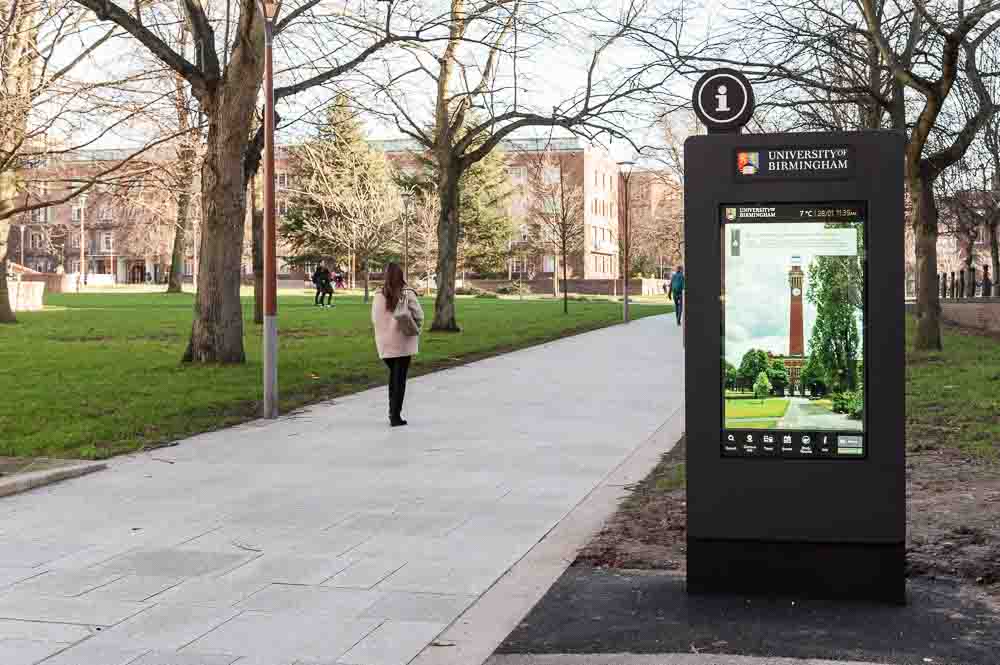Digital signage is fast becoming one of the more innovative ways of relaying information in the built environment. The flexibility of digital devices makes them increasingly useful as a means of interacting with visitors to a space and their programmability makes them ideal for use in areas where information may need to change or be updated periodically.
Digital, or electronic, sign displays have often been simple, illuminated projections that highlight wayfinding directions. Today, digital wayfinding has evolved into the application of highly detailed interfaces that use the power of modern screen technology to create almost any graphics and information required. Using the same touchscreen technology that features in mobile phones, the boards can also be interactive and made to display an array of information depending upon what the user needs.
Digital signage lends itself best to areas that have high footfall and a high number of wayfinding options, such as shopping environments and university campuses. Accurate wayfinding in those types of environments requires a lot of detail, which doesn’t lend itself to traditional sign systems. The interactive nature of digital signage displays means that users can search for their intended location and download the directions to that location on to their own smart phone device. Innovations in screen technology can allow for multiple users to use the one device at the same time.
The driving force behind this kind of signage is a shift towards our increasing usage of smart devices in all aspects of our lives. A blend of signage hardware and software is making digital signage more attractive to end users. The innovations in hardware housing and the miniaturisation of technology allows for delicate electronic components to be housed inside hardware and remain protected even when exposed to extremes of weather. Capacitive-type touchscreens are now fairly robust and relatively low cost, so are able to withstand the rigours of the outside environment, making them ideal for use in digital signs. Sealing a screen using rubber beading will ensure that moisture cannot get into the circuitry while exposed to rain or snow and sturdy constructional materials, such as stainless steel, can offer the support that the system needs while retaining good looks and low corrosion.
Key to the whole system is the software that runs the digital displays, and there are a growing number of software developers that specialise in this field. Digital displays often use simple computer systems running operating systems that most of us are familiar with, but will run bespoke applications developed to display wayfinding and any relevant information to the space the digital signs are being installed in.
Digital signage displays offer huge potential to create something that the user can become immersed in and offers an additional way for users to interact with the space. As technology costs for components continues to fall, these solutions are becoming more popular in the built environment.
Read about our digital wayfinding displays that feature at the University of Birmingham.



